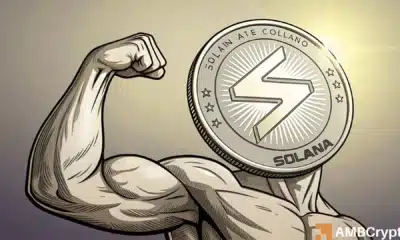Report: Polkadot emits the least carbon per year out of these six alts

Everybody in the crypto sector has heard the cliche that proof-of-work blockchains destroy the earth, while proof-of-stake blockchains preserve it. However, the world isn’t so simple and neither are the rules so clear-cut.
A research report by the Crypto Carbon Ratings Institute [CCRI] looked at six altcoins that use the proof-of-stake consensus mechanism to compare where they stood in terms of electricity consumption.
As it turns out, the spectrum is wide, indeed.
I Sing the Body Electric
CCRI’s report looked at Cardano, Polkadot, Solana, Tezos, Avalanche, and Alogrand to assess their total electricity consumption in a year, and consequently, their carbon emissions per year.
Not surprisingly, different alts scored well in different areas. While Polkadot reportedly consumed the least electricity per year, Cardano used up the least electricity per node. According to the study, Solana used the least electricity per transaction, while Polkadot again came first with the lowest total carbon emissions per year.
In its report, CCRI stated,
“An average US household consumes about 10,600 kWh per year and therefore, the least electricity consuming network Polkadot consumes about 6.6 times the electricity and the most electricity consuming network Solana about 200 times the electricity (U.S. Energy Information Administration, 2021).”
While investors and traders might be tempted to look for an overall eco-friendly “winner,” this is a reductive approach. To even bring the six diverse altcoins to a level where they could be compared, CCRI worked with a dizzying number of metrics and conditions. These included each blockchain’s minimum hardware requirements, the electricity usage of each node, network electricity consumption, and extra information such as transaction data.
All said and done, CCRI’s results are the researchers’ best estimates after considering a barrage of variables, as opposed to steady data.

Source: CCRI Report
Even so, Polkadot wore its laurels with pride.
Polkadot has the smallest carbon footprint, crypto research says: https://t.co/XmC8ieCmeS
— Polkadot (@Polkadot) February 3, 2022
A final point is that numbers aren’t everything. Other factors such as the location of most nodes, cross-country energy differences, and even the founding teams’ efforts to offset their carbon footprint can make a huge difference in how such values are generated.
Do pandas dream of nature NFTs?
It’s hard to imagine people getting upset with a conservation group, but that’s exactly what happened when WWF UK announced its “Tokens for Nature” NFT collection to raise awareness about endangered animals. Though WWF UK assured supporters that its “eco-friendly” NFTs were built on the Polygon blockchain, many were firm in their belief that no blockchain could ever contribute anything positive to the environment.






